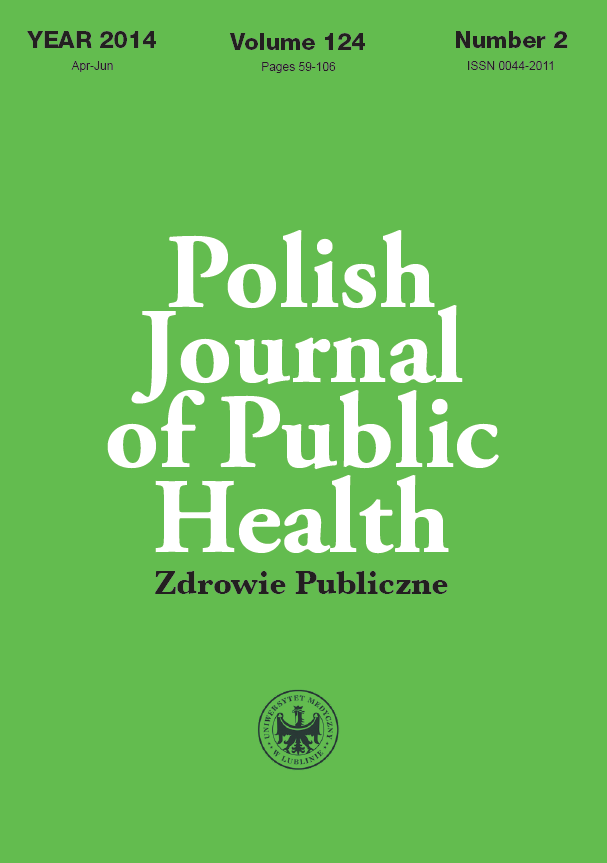Gingival crevicular fluid – composition and clinical importance in gingivitis and periodontitis
DOI:
https://doi.org/10.2478/pjph-2014-0022Keywords:
gingival crevicular fluid, periodontitis, gingivitisAbstract
Among many substances used in clinical diagnosis, such as peripheral blood, gum homogenate, saliva and gingival pocket fluid, it is the latter that seems to bean extremely valuable diagnostic and research material. Identification of mediators in gingival crevicular fluid, both in the healthy gingival fissure, as well as in pathological periodontal pockets can be a valuable supplement to the initial diagnosis and describe the mechanism of gumorperiodontal diseases. Changes in the concentration of individual components in the gingival crevicular fluid may be used to assess the severity of periodontal disease. There are numerous methods for collecting fluid from the sulcus described: Micro-capillary drainage, micropipette drainage, rinsing pocket or drainage with the use of methylcellulose strips and then reading with Periotron. Gingival fluid is composed mainly of blood electrolytes and organic molecules, i.e. albumins, globulins, lipoproteins or fibrinogen and cellular components as well as peptides, bacteria and enzymes. Therefore gingival crevicular fluid (GCF) is treated as a window for noninvasive analysis of periodontitis, taking into account indicators and markers of connective tissue and bone destruction.References
1. Ganowicz E. Salivary Diagnostics – Diseases of the Oral Cavity. Dent Med Probl. 2011;48(3):421-30.
2. Miller CS, Foley JD, Bailey AL. et al. Current developments in salivary diagnostics. Biomark Med. 2010;4:171-89.
3. Bostanci N, İlgenli T, Emingil G, et al. Gingival crevicular fluid levels of RANKL and OPG in periodontal diseases: implications of their relative ratio. J Clin Periodontol. 2007;34:370-6.
4. Gilowski Ł, Wiench R, Płocica I, et al. Płyn dziąsłowy – czym jest i co umożliwia? Czas Stomatol. 2007;3:171-8.
5. Sharry JJ, Krasse B. Observations on the origin of salivary leukocytes. Acta Odontol Scand. 1960;18:347-58.
6. Rahnama M, Świątkowski W, Zaręba S. An assessment of the alkaline and acid phosphatase activity in rats serum during experimental postmenopausal osteoporosis. Rocz Państ Zakł Hig. 2002;53(3):283-91.
7. Rahnama M. Osteoporoza pomenopauzalna w badaniach doświadczalnych i klinicznych. Ocena wpływu poziomu wybranych markerów obrotu kostnego, ekspresji ich genów oraz szlaku RANKL/RANK/OPG na gęstość tkanki kostnej. Lublin: Uniwersytet Medyczny w Lublinie; 2009. p. 322.
8. Fiorini T, Vianna P, Weidlich P, et al. Relationship between cytokine levels in serum and gingival crevicular fluid (GCF) in pregnant women. Cytokine. 2012; 58(1):34-9.


